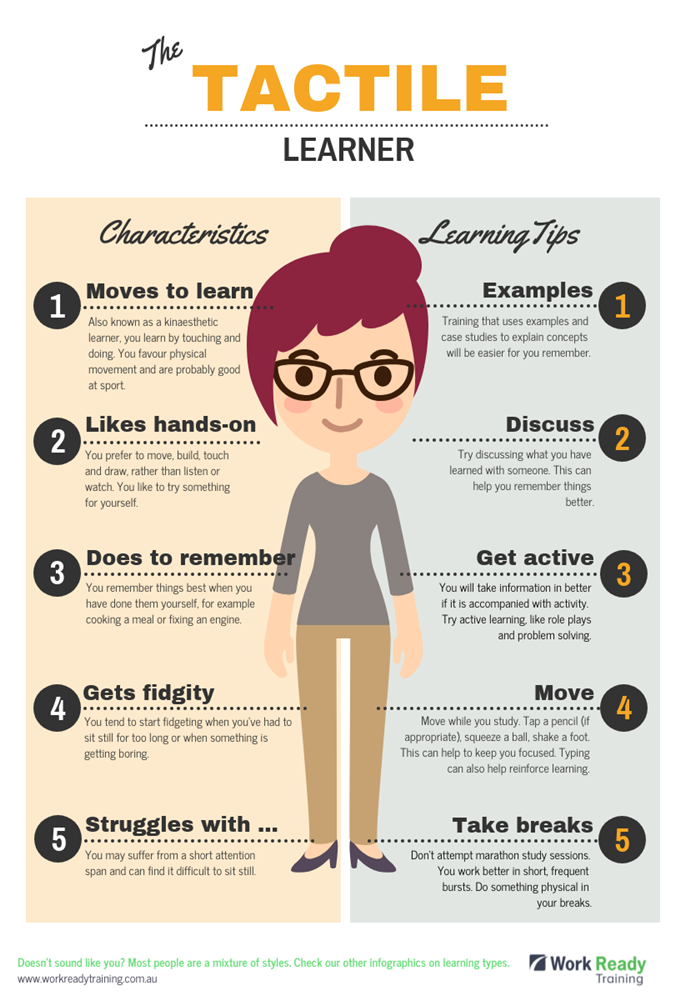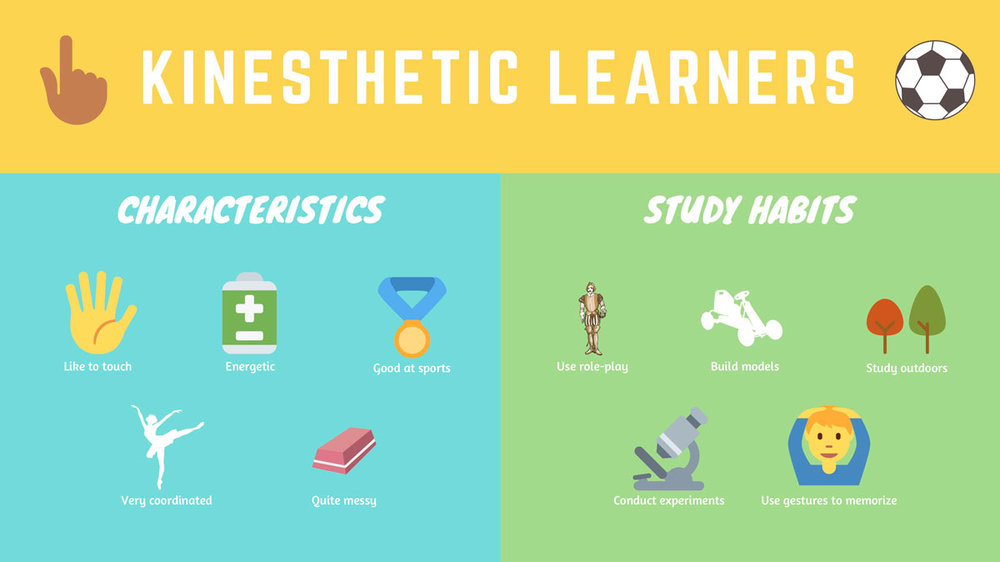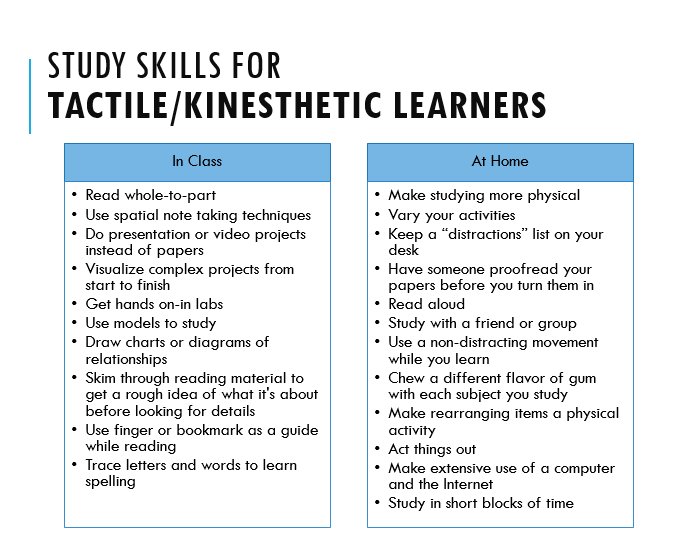As a hands-on learner it can be difficult to sit at a desk for long periods of time. This post focuses on active study strategies for the Tactile Learner.

What Learning Style Fits You Best Here Are Some Great Study Tips Kinesthetic Learners Kinesthetic Learning Learning Techniques Learning Styles
Be physically active while you study.

. Think of ways to make your learning tangible ie. The last of the study tips for kinesthetic learners is to incorporate small breaks into your study sessions or long lectures. Something you can put your hands on.
For example make a model that illustrates a key concept. Learning strategies of tactilekinaesthetic learners. A museum historical site or job site to gain first-hand experience of your subject matter.
Try walking around while reading or studying. When preparing for an exam of any type the tactile learner should practice writing a test essay make up your own essay questions. Work with quiet music in the background.
Spend time in the field eg. One tip I have for this learning type is to use your computer or even a tablet while studying. In STEM learning particularly hands-on activities can be crucial for success.
Visual auditory tactile and kinesthetic. Work out as many math problems as possible. Instead of having students watch a movie about rocks or look at pictures set up a more hands-on activity.
Even though your bed sounds amazing this probably isnt the best place to study. Take Notes Lots of Them Many tactile learners find that the act of writing helps them retain information. Therefore every 55 minutes of studying or as often as you need take 5 minutes to walk around do some push-ups stretch or eat a.
Study Strategies for the Tactile. If you are a tactilekinesthetic learner the suggestions that follow can help you to succeed in school to the best of your ability. Kinesthetic Learners Study Tips THAT WORKThere are 4 types of learners kinesthetic verbal visual and auditory.
Learning games and group activities are good tactics for the tactile learner. They need to deal with the information physically so experiments and projects are great for this type. Use a hands-on approach to learning.
A standing desk is an excellent option for tactile learners. Make games puzzles out of what. Learn by touching and doing whether it be a physical activity or simulating an experience so as to create a personal connection.
What are the Other Learning Styles. Tactile learners usually do their best studying when movement is involved so get active as you study. Take regular short breaks.
Tactile learners remember where they placed things. Learn by reading or seeing images. When teaching science objectives you will reach tactile learners better if you plan several experiments throughout the unit to demonstrate the material.
Monitor their role play for factual information. Whenever possible convert what you are learning in math to real-life concrete experiences. The more active this student can be during study time the more information that study is likely to retain.
Some tactile learners like to study sitting in a comfy chair or lying down. 20 Tips for Tactile Learners. For others though a standing desk may be more effective.
Learn by listening or speaking out loud. Youll be amazed at the positive results. Draw to capture images of information that you are learning.
Close your eyes and trace words or images with your finger. Create dioramas and models. If you are a tactilekinaesthetic learner make sure you are active and use your body and sense of touch.
Role play will help almost any student learning style not just tactile. Like most study tips for tactile learners the trick is to experiment and find out what works. Models can be created in any subjectin math tactile.
Here are some strategies that may be useful to you are a kinesthetictactile learner. Rather than just sit at your desk occasionally walk back and forth with your textbook or notes as. Study works best if you.
People who are considered tactile learners do best by touching and doing. Four commonly known learning styles are. If you have kinesthetic intelligence or.
Manipulate materials during hands-on activities. Spend extra time in a lab setting to learn an important procedure. For example try role-playing and acting out stories creating memory games or using flashcards.
Place rocks around the room and have students walk to each station looking and touching the rocks to identify what type they are. As a tactile learner make sure the environment you choose to study in allows for movement.

Work Ready Training What S Your Learning Style Tactile Learner

What S My Learning Style Ppt Download

Activities To Improve Articulation In Kinesthetic Learners Kinesthetic Learning Activities Kinesthetic Tactile Learning

Tips Tricks And Study Skills Success In A

The 4 Kinds Of Learners And The Best Learning Strategies For Each Bigbyte Education

News Discover Your Learning Style Kinesthetic Kinesthetic Learning How To Memorize Things

Ucf Sarc 在twitter 上 Here Are Some Helpful Study Tips For All Of You Tactile Kinesthetic Learners Out There Studytiptuesday Sarc Ucfknights Https T Co R109hk7f30 Twitter

0 comments
Post a Comment